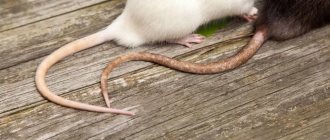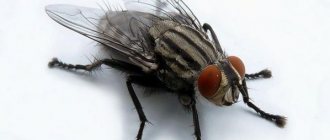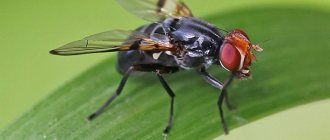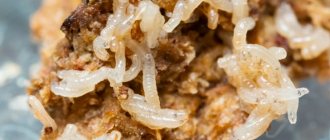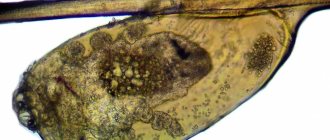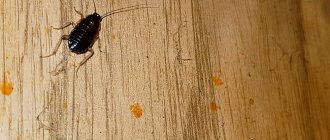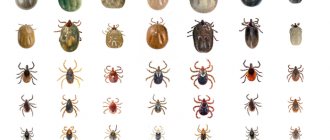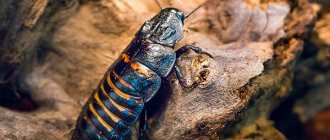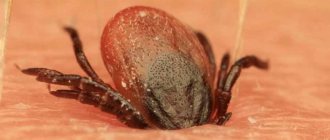Description of rats
Rats are the most common family mammal. They can be found throughout our vast planet. Despite belonging to the same family, rats differ from mice not only in appearance, but also in behavior.
Additionally, rats are much larger in size than mice. Their body is more developed, the snout is more elongated, the nose is more elongated. The rat's eyes are relatively small, like beads.
When threatened, these rodents begin to secrete a strong-smelling secretion that makes the rest of the family aware of the danger. Despite their size, their body structure is such that they can fit through small openings that make up about 25 percent of their entire body circumference.
Physical and mental abilities of rats
Mammals of the mouse family are able to move along vertical surfaces. They swim excellently at distances reaching about 800 m , while still managing to catch fry.
Individuals reproduce incredibly quickly. The offspring of one female can be 15,000 pups . Despite the extermination of pests, these figures are very impressive.
Once upon a time, nuclear weapons were tested on an American island. Scientists have been waiting for the outcome of the consequences for a long time. For this purpose, traps were set on one of the surviving islands.
To their surprise, the traps were filled with rats, and in large numbers. Biologists realized that rodents are resistant to radiation , and their life cycle has increased. Although scientists have established the lifespan of animals, it is a little more than 1 year .
Pests are naturally endowed with excellent memory . If they find that a set trap or an ordinary stone is slightly moved, then this place will be used by them for 2-3 days.
Rodents are dangerous not only to property, but also to human life . They are carriers of more than 20 pathogens of various diseases. The most common is plague . People have come up with ways to get rid of the disease, but you should not relax your attention, since other dangers can be expected from gray creatures.
Rats are unique animals . They easily distinguish poisoned foods, which indicates excellent mental abilities.
Difference between rats and mice
Rats and mice belong to the same suborder, but are very different in appearance and behavior.
The body of mice is small, up to 20 cm, weighing up to 50 grams, rats are twice as large, compact and muscular, weighing up to 900 grams.
The characteristic shapes of the head and eyes are different, in mice it is triangular and slightly flattened with large eyes, in rats the muzzle is elongated with small eyes.
A strong body and strong fingers allow rats to jump up to a height of 1 meter; mice cannot do such tricks.
Mice are cowardly animals and are afraid to get into people's eyes, but rats are not shy, they can defend themselves. There are many cases where they attacked people.
Rats are omnivores, eating meat and plant foods. Mice, on the contrary, prefer grains and seeds.
Appearance
These members of the mouse family have a distinctive rodent-like body structure that is quite robust and oval in shape. Adults grow to 8-30 cm in length and can weigh between 40 and 510 grams. There are species that differ from their counterparts depending on the species as well as the habitat.
The rat's snout is pointed and elongated, with small eyes and ears. The tail of most varieties is completely bare, covered with scales and sparse hair. Black rats are distinguished by the fact that their tail is completely covered with thick black fur.
As a rule, rats have a rather long tail, which is proportional to the length of the body, and sometimes even exceeds it. Although it should be noted that there are also short-tailed rats.
The jaws of this rodent are armed with pairs of incisors, which are noticeably larger than the teeth. The molars are arranged in dense rows so that the rodent can grind food quickly and vigorously. Between the incisors and molars there is an area where teeth do not grow.
Rats do not have fangs, although they are omnivorous mammals. The rat's incisors are constantly growing, which requires constant grinding, otherwise the animal will not be able to completely close its mouth. This is due to the fact that incisors do not have roots.
The front of the incisors is much stronger than the back because it is covered with strong enamel. As a result, the cutters do not grind evenly and end up becoming chiselled.
Their teeth are so strong that rats can easily cope with obstacles such as brick and concrete, although they were originally intended only to obtain plant food.
Interesting information! Rats have fairly thick and dense fur, thanks to their distinct spindly hairs. Coat color can range from gray-brown to dark gray, with varying shades of reddish, orange, or yellow.
Although rats have calluses on their feet, they are poorly developed. Due to the presence of calluses, many animals move quickly over all surfaces. This deficiency in rats is compensated by their persistent and mobile toes.
Therefore, rats can lead both terrestrial and semi-terrestrial lifestyles. They easily move through trees, so they make their nests in tree hollows or use already prepared nests of other animals and birds, left by them for various reasons.
Behavior and lifestyle
Rats are considered incredibly agile living creatures and extremely resilient. For an animal of their size, they run brilliantly, reaching speeds of up to 10 km/h, while overcoming obstacles up to 1 meter high.
These rodents walk an average of 12 kilometers per day. They swim, dive and catch fish easily. Rats can stay in water for up to 3 days, or even longer, without causing harm to their health.
Nurs left by other animals, as well as artificial shelters and nests of various birds, can serve as shelter for rodents. If necessary, the rat can dig a hole for itself.
Rats have no problem living an isolated lifestyle, forming both family groups and territorial communities. A colony may contain several hundred people who are subordinate to one dominant male and several dominant females. Each such group is capable of controlling an area of about 2000 square meters.
Rats have poor eyesight, they are characterized by a small angle of view of about 16 degrees, so the rat constantly turns its head in different directions to explore the space around it. It is believed that rats perceive their surroundings in shades of gray, and darkness appears in red to them.
Interesting fact! Rats have a well-developed sense of smell and hearing, which allows them to hear sounds up to 40 kHz.
Rodents are able to distinguish odors over short distances. However, it should be noted that they can withstand irradiation of about 300 x-rays per hour without any particular difficulty.
How long do rats live?
This indicator is directly related to the species. If we consider gray rats, then under natural conditions their life expectancy does not exceed one and a half years, although some people live up to 3 years.
If we take black rats, they usually live less than a year. Rats kept in laboratories of various scientific institutions live twice as long. The Guinness Book of Records contains information about the oldest rat, which managed to live for almost 8 years.
Sexual dimorphism
When animals are one and a half months old, their sexual characteristics are fully formed. To determine whether it is a female or a male, simply lift the tail to determine the structure of the animal's reproductive system.
Men are different from women:
- By the presence of sufficiently large testicles that can be detected when the animal's tail is lifted.
- Males do not have nipples on their bellies like females. They are located in two rows.
- In males, the distance between the anus and urethra is slightly larger.
- Men are stronger and more powerful and larger in size.
- Males have a pear-shaped body, while females are smooth and elongated.
- Males have denser and tougher fur, while females are smooth, soft and silky.
- Men are less aggressive than women.
- Men's urine is more pungent and has an unpleasant odor.
When it comes to newborn rats, determining their sex is almost impossible. Although experts know that newly hatched males have small spots between their anus and genitals. Over time, testicles appear in place of these spots.
Important note: According to experts, one adult couple can produce up to 6,000 young in a few years. Rats, having reached sexual maturity, are no less active in reproduction.
Types of rats
Acacia
The acacia rat grows to 10-18 cm in length and weighs 63-150 grams. It has tall fur with a gray-brown tint. The sides of the rodent are painted gray. The belly and lower parts of the body are white. This wild rat species is widespread on the African continent. Its range extends from Kenya to Angola.
This species is nocturnal and nests on branches, in hollows and between the roots of acacia trees. Wild rodents can do without water; they only need liquid food. They feed on fruits, seeds, herbs and even tree resin that drips from the trunks.
Toothless
This wild rat species was first discovered in Indonesia in a tropical mountain forest on the island of Sulawesi. Its appearance is reminiscent of its gray counterparts. But unlike them, he has large ears and an elongated snout. This species of wild rodent has virtually no teeth, with the exception of a pair of large upper incisors.
This is what these unusual animals use when they eat their food. Wild rodents use their incisors like a knife. They first suck up earthworms, cut them into small pieces, and then spit them out and swallow them whole.
Interesting! Scientists have given this wild species the unpronounceable name Paucidentomys vermidax, which translates to “toothless rat.”
Redheads
Representatives of this species are widespread in the territory of the former Soviet Union. They live in homes and farm buildings, which is why they are often called barn dwellers. Their activity does not depend on the time of day, and the ability to reproduce, under favorable conditions, remains throughout the year.
Wild red rats grow up to 25 cm in length and have thick fur that varies in color from bright red to brownish ocher. This species is easily recognized by its wide face, blunt nose and round black eyes.
They have short ears, short legs with prehensilely divided toes, and a grayish-pink tail. Wild red rats' hind legs are much longer than their front legs, and their toes have small webbed feet.
Palm
It is a typical forest species and is not found outside the Nicobar Islands. It inhabits tropical and subtropical mangrove forests. Externally, the palm rat is very similar to a giant mouse.
Bamboo
The bamboo rat is found in southern China, Cambodia, Thailand, northwestern Vietnam, Bhutan and northeastern India. It is installed in self-healing tunnels over 50 m long. That is why it is also called the “mole rat”. This rodent is distinguished by its medium and large size. The length of its body varies between 16.2-45.7 cm, and weight - 210-340 g.
The Chinese bamboo rat is similar to the American poker rat, with short legs and small eyes and ears. It has short, thick fur on its head and body, and sparse hair on its tail. The bamboo rat comes in a variety of colors.
Its color ranges from reddish brown and brown to ash gray and grey. The lower parts of the wild rodent's body are covered with lighter, thinner fur. Some varieties have a white stripe on the crown and from the chin to the throat, so they can be called black and white.
Saccular
This breed of rat lives in Kenya, Uganda, Tanzania and throughout the southern part of the African continent. They are found in light forests, open woodlands, shrub and grassy thickets, agricultural fields and swamps. Wild saber-toothed rodents are nocturnal. They are quite slow and live in solitary burrows with one entrance.
Outwardly, they do not look like other types of rats, but are more similar to marmots or gerbils. Wild rodents have very long hind legs and rely on them only for rapid movement. The tail of baggy rodents is usually longer than the body and is often decorated with tassels.
Most varieties have small, rounded ears, fluffy, soft fur, and large eyes adapted for twilight and night vision. The color of a wild bag rat can vary and depends on the color of the substrate on which it lives.
Interesting. Thanks to their strong, long hind legs, baggy rats can jump up to 2 meters. This species is not afraid of snakes and communicates using a combination of tapping sounds.
There are more than 60 species of wild rats in the world, each of which is unique and interesting in its own way. Fast, mobile and curious, these rodents are nocturnal and live both in the wild and near people.
Kangaroo rats
Length: up to 61 cm. Weight: up to 3 kg.
Infrared marsupial rodents are found only on the Australian continent. These unique animals move in small steps, making their forelimbs less developed than their hind limbs.
Adults grow up to 61 cm in length, and the tail reaches 25 cm in length. The weight of these individuals varies from 1 to 3 kilograms. The largest among this species is the red kangaroo, reaching a weight of 4 kilograms. There is also the rat Paturu. Weighing 3 kilograms, it reaches a body length of 60 centimeters.
They used to inhabit almost the entire continent, but now their numbers have decreased. Introduced foxes and dogs catch large rats, causing the animal population to suffer greatly.
Gambian hamster rat
Length: up to 90 cm. Weight: up to 1.5 kg.
This large rodent of the Independent family, including its tail, is almost 90 centimeters in length and weighs on average between 1 and 1.5 kilograms.
These giants are located south of the Sahara. They came to the United States thanks to a man. They were brought to Florida as pets, escaped and settled into their new home.
They are nocturnal, hiding in dense forests and thickets. They can be trained, and people have taught them to detect ammunition and mines. They can recognize people with tuberculosis.
Curly rat
Otherwise this breed is called Rex. The animal has medium or long wavy hair. The size of an adult rodent is 8-20 cm, tail length is 10-12 cm, weight varies from 350 to 600 g depending on gender. The muzzle is wide and blunt. Skin color can be any color. Life expectancy 3 years.
Tailless rat
The rodent breed was bred in 1983. Rats are born completely tailless, so they have a rounded lump and a stocky body, 22-28 cm long and weighing 250-400 grams. The animal may have a completely different coat color. Average service life is 3-3.5 years.
Turkestan rat
Length: up to 25 cm. Weight: up to 400 g.
The habitat extends from Kazakhstan to the mountainous regions of Nepal. They are used to living at an altitude of more than 1000 meters. The largest colonies are located at an altitude of 4500 meters above sea level.
They live only in the rocky terrain of mountainous regions. They often settle near human farms and residential buildings. In appearance and coloring, they are not much different from their gray counterparts.
In Central Asia, rat colonies are a real disaster for crops and gardens. They grow up to 25 centimeters in length and weigh less than 400 grams.
Black rat
A more aggressive type of rodent, which is most often found in cities. Black rats are smaller than gray ones. Adults have a body length of 55-22 cm and a weight of 132-300 g. The tail is densely covered with hairs and is usually 25-30% longer than the body, but does not exceed 30 cm.
The coat is black and brown in color, while the belly is usually white or yellow. The service life of a rodent is 2-2.5 years.
Bamboo rat
Length: up to 47 cm. Weight: up to 340 g.
The rodent, which learned to live ideally underground, dug for itself in labyrinths. They grow up to 47 centimeters in length, and adults can weigh up to 340 grams.
These animals have thick, soft fur, usually a warm brown color. They are most common in Southeast Asia and the Pacific Islands.
There are three subspecies in the family, which differ in size and coat color. They all eat plant foods. They are excellent excavators, digging a complex system of passages and “storehouses” underground.
Small rat
This is one of the three most common subspecies of rats in the world. They are found in Indonesia, New Zealand, Southeast Asia and Oceania. The wandering rat has the most modest body size among its relatives.
An adult rat weighs 40-80 g, its body length is 11.5-15 cm. The tail is usually as long as the body, and the fur color is brown. Average service life is 2-3 years.
Rat "Standard"
The most common type of domestic rat, which over time man has managed to tame and make his pets. The animals have a massive body that can reach 24 cm in length, weight ranges from 300 to 500 g, and largely depends on the sex and diet of the animal.
The length of the tail can exceed the length of the body by 30-40%. Most often the fur is dark brown or grayish. The lifespan of these rodents does not exceed 3 years.
Rat "Sphinx"
This is a species of decorative rats that are completely hairless. Their body size does not exceed 25 cm, and the tail length is 22-27 cm. They have large ears and almost no mustache. They are friendly creatures with delicate health that require a lot of care and a warm place to live. The lifespan of rodents is 2.5-3 years.
Where are gray rats common today?
The gray rat inhabits almost the entire globe, with the exception of the polar regions. It is believed that its original habitat was in Eastern China, from where the animal began its victorious march around the world. Today, most pasyuks live in Southeast Asia, Central Africa, the southern United States and Western Europe.
It is also useful to read: Consequences of rat bites and what to do if you are bitten
The habitat of the species is quite heterogeneous. In many countries, gray rats are found only in cities; in some places they are not found in large areas. For example, in the Canadian province of Alberta this species was registered only in recent years.
The fact is that the gray rat, which is cosmopolitan, is a synanthropic animal and expands its range specifically in cities and villages. From here, in tropical and subtropical climates, individual animals move into the wild, but this happens slowly, and therefore in many countries the range of animals is a set of points in cities and villages against the backdrop of vast spaces in which there are no representatives of this species.
In natural biotopes, the gray rat lives near water, in wet meadows, in steppe and desert oases. It does not climb high into the mountains and avoids places with sparse vegetation.
However, in the north these animals do not leave the cities at all. In the temperate zone (approximately to the latitude of Saratov), gray rats spend the winter in human housing, and in the warm season they settle in agricultural lands. South of the 50th parallel, the Pasyuki form permanent settlements in the wilderness.
Natural habitats
Rats can safely be called animals that appeared on earth even before people appeared on it. They can be found in almost every corner of our Earth. Depending on the species, they can be found on the Euro-Asian continent, as well as on other continents, including Australia, the Malay Archipelago, New Guinea, etc.
However, their habitat is limited to northern, cold regions. Within the borders of the central belt of Russia, no more than 2 species of rats live - gray and black. If necessary, a rat can travel up to fifty kilometers in one day.
Rats are mammals that easily adapt to fairly harsh living conditions, which is why they can often be found at abandoned research stations in Antarctica.
Danger to humans
The confrontation between humans and rats has been going on for thousands of years. In our time, such a struggle has received an official name - rodent control. Despite its notoriety in Europe and many other countries, including America, in some eastern countries this rodent has received the status of a divine animal, symbolizing wealth, wisdom, prosperity, etc. The negative image of this rodent is associated with several plague epidemics in Europe, which are carried by rats.
Important note: Rats cause serious economic damage, which is associated with spoilage and consumption of all kinds of goods, both food and non-food. These rodents damage the insulation of electrical circuits, leading to fires that kill many people, not to mention causing property damage.
Some types of rats cause serious damage to the crop, as they simply destroy it. Therefore, in such conditions, people resort to various methods of protecting crops from rodent infestation.
In some cases they are simply repelled, and in some cases they are physically destroyed. Rats now pose a serious threat to the health of all humanity, since these rodents are carriers of pathogens of dangerous diseases. They are also dangerous because they can enter people's homes undetected through sewers and ventilation systems.
Despite the constant and serious fight against rats and other rodents, it has not yet been possible to completely eliminate them, but the population of these pests can be controlled.
Experts have established certain standards for deratization, providing for an optimally acceptable percentage of the territory free from rodents.
Here's why it's important:
- 80% is a satisfactory result.
- 90% is a good result.
- 95% is an excellent score.
Therefore, it is assumed that the work of special pest control services is to maintain an acceptable percentage of rodents in a particular area that would not cause serious damage to human livelihoods.
Population and species status
Since the beginning of the third millennium, the black rat population has declined significantly and become fragmented. According to experts, black rats have begun to be replaced by more fertile gray rats (pasuks). However, despite high fertility, rat populations do not cross the “red line”, since their numbers are controlled by a number of important factors.
Firstly, the abundance of these animals directly depends on the availability of food and places for shelter. Food shortages immediately lead to population decline. In addition, there are special rat control services.
The number of these animals is constantly declining due to some diseases, as well as due to hunting by many predators. Therefore, despite their high fertility, which leads to a constant increase in their number, natural factors, as well as rat control services, do their job.
Currently, most rat species are not even found near the danger zone, although there are very rare species that are protected. As a rule, the abundance of rare species largely depends on the actions of humans, who develop more and more land associated with the natural habitat of these species.
Franklin Island is home to a very rare species of domestic rat. Due to its limited habitat, the species is classified as endangered. Currently, only about 2,000 people live in the area. Annual deforestation and forest fires can reduce the kangaroo rat population.
Dossier
Rat.
CC0
Full name: Norway rat (gray), black rat, Bosavi and others.
Nicknames. Pasyuk, kurako, shchur.
Signs. Unevenly gray (“agouti”), sometimes with reddish spots, black, white, mottled.
Special signs. Hairless tail, poor eyesight.
Place of residence: planet Earth.
Character: persistent.
Intelligence: above average.
Suspected: in the death of dinosaurs.
Accused of : causing death by negligence of 25 million people in the 14th century alone; theft of someone else's property by an organized group on an especially large scale; destruction or damage to someone else's property, resulting in particularly grave consequences.
Interesting facts about rats
Rodents evolved long before humans. And they have existed for many centuries.
This allowed us to study their characteristics in detail and learn interesting facts about rats:
- The animals are extremely intelligent and intelligent and can be trained just as well as dogs;
- Mammals are susceptible to stress and mental disorders that can lead to death;
- Rodents, like people, have dreams;
- Some people are ticklish and may laugh when tickled;
- Animals sense approaching danger, so they leave the “bad” place en masse;
- If necessary, animals jump to a height of up to 2 meters;
- Rodents can go without water longer than camels.
Residents of Laos, Cambodia, parts of Thailand, Indonesia and China still eat rats, considering their meat an exquisite delicacy.
A real homebody
Over the entire history of living next to humans, rats have made dizzying journeys - they populated almost the entire planet on ships and trains. But biologists still say: they are homebodies.
No, sometimes they get the wanderlust itch. For example, in 1966, hundreds of thousands of rats in Thailand, for no apparent reason, walked around the country en masse and swam across rivers. But, as they say, the exception only confirms the rule.
During Soviet times, a scientist tagged black rats living in the Abkhazian forest. Two months of surveillance showed that the rats did not dare move even fifty meters away from the nest.
The gray rats that were spied on in Volgograd were a little bolder - they could break away from their home by 100-120 meters. But with a sufficient amount of food, they staunchly adhere to their habitable place. In general, home sweet home.
Rat.
creativecommons.org
Reproduction and offspring
Rats, regardless of species, reproduce very quickly. This is also due to the fact that they reach sexual maturity quickly. Women give birth at short intervals. A mature woman can mate every 5 days, except during pregnancy.
Over the course of 1 year, each adult female gives birth to up to 4 dozen rats, whose gestation period is about 3 weeks. Upon reaching one and a half years, women approach menopause, which at first occurs irregularly, and then the female is no longer capable of reproduction.
Until the end of the pregnancy period, the female is busy cleaning the nest. She places soft grass at the bottom of the nest. Sometimes the female digs a new hole and then makes a new nest. Often the female keeps a supply of food in this nest, so she can stay with the newborn for a long time without any problems.
Depending on the species, female rodents can give birth to 8 to 15 offspring at a time. Rats are born naked, blind and deaf, with completely closed ear canals and without a well-developed thermoregulatory system.
After birth, they cannot excrete processed ingredients on their own. Therefore, the female constantly licks her belly, as if massaging it, which helps to activate metabolic processes.
The young are fed with mother's milk, which contains up to 9 percent fat. Unfortunately, rats are capable of destroying their offspring, and males are more likely to do this. As for females, they can eat dead young or very weak ones.
Interesting information! House rats can mate with black rats, but their offspring do not survive and often the mother's body rejects the embryos completely and nonviable offspring are born.
After some time, the rats develop fur, and within a week they can see and hear. On the ninth day, the first incisors of the young begin to appear. After 3 weeks, the young generation independently explores the surrounding area, and after another week they are ready for independent living. They become fully adult at the age of one year.
What do gray rats eat?
Gray rats stand out among other rodents in that a significant proportion of their diet is animal food. With a sufficient abundance of food resources, their diet consists of 60-70% plant foods and 30-40% animal products.
Pasyuki willingly eat fruits, vegetables, grains, groceries, semi-finished products, meat, fish, eggs, milk - absolutely everything that humans eat. However, with a limited choice of food, gray rats can eat either exclusively plant foods or only animal products.
For example, the following extreme cases are known:
- On some tropical islands, populations of rats have been found that never come down from the trees to the ground. Many generations of them live in the crowns of tropical palm trees, feeding on the core of coconuts and young leaves, only occasionally and with luck introducing diversity into such a vegetarian diet due to chicks and eggs, as well as mollusks and insects. Although most of these “tree” rats are black, pasyuks are also found among them;
- Rat colonies have been found in industrial freezers in slaughterhouses. The animals lived at a constant temperature of about -18°C, built nests inside frozen carcasses, lined them with tendon fibers, and safely hatched their young. Their only food was frozen meat, since they could not get out of such chambers and get other food;
- Rats thrive in landfills near slaughterhouses. Here they feed on skins and offal;
- On the beaches, pasyuki live off emissions from the sea. They feed on algae, crustaceans, crabs, mollusks, dead fish and eggs of birds nesting here.
In general, the gray rat is a universal consumer. She is able to eat almost anything that can provide her body with calories. With a lack of normal feed, animals supplement their diet with tree bark, hay, paper, feces, not to mention grass, carrion, rotting and fermented fruits and vegetables.
This is interesting
It is due to omnivory that gray rats, by the way, solve their main physiological problem: they are not able to starve for a long time. At most, the animal can survive without food for 3-4 days. But if a rat has access to dry food (for example, grain), but does not have the opportunity to drink, it will die only after 2-3 weeks due to dehydration.
In practice, these animals are rarely hungry: they eat mold and moss, lick dew from the stone walls in the basement, gnaw the corpses of fallen brothers without a twinge of conscience, digest sewage and feel great at the same time.
Often, a rat turns into a formidable predator: the animal can attack ducklings, gnaw out the webs on the feet of dormant birds, gnaw the skin on the feet of elephants, and bite sleeping people. Together with black rats, pasyuki destroyed or contributed to the extinction of dozens of species of birds that nested on remote Pacific atolls: having arrived here with random ships, they switched to feeding on eggs in the nests, and the birds themselves, who had never known predators before, did not have time to adapt to the emerging threat.
Perhaps only the lack of food may be the only limiting factor for the spread of gray rats. That is why they do not live in nature in temperate climates: in winter they simply do not find enough food for themselves under the snow. If they had access to at least some food at this time of year, they would live here too, without fear of the cold.
This is interesting
Rats do not store food. This is partly why they cannot compete in their natural habitat with rodents in the alpine zone and with the same lemmings in the tundra, and do not survive where other rodents - voles, hamsters, gerbils - feel normal.
But omnivorousness and high adaptability to different conditions are not the only qualities of gray rats that make them prosperous and indestructible...
